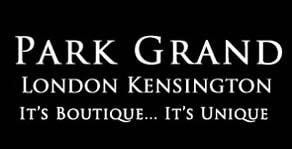For good reason, the UK capital, London, is renowned for its multitude of world-class museums. So much so, in fact, that not to visit one or two of them during a stay in the city really wouldn’t be on (as the locals might say). But which of them to visit, then? Well, take your pick from these, the pick of the very best…
Natural History Museum
(Cromwell Rd, Kensington, SW7 5BD)
Easily – and rightly – one of the most popular of all of London’s oh-so many museums, South Ken’s Natural History Museum offers so much for all visitors – but especially the young (whether staying nearby at Park Grand Kensington accommodation or not). It features millions of animal and plant specimens (both extant and extinct), a dedicated dinosaur section and fascinating areas covering Earth’s diverse geology via examples of all sorts of rocks, minerals and fossils and, of course, a highly impressive and hugely informative, state-of-the-art section focusing on this very subject.
Don’t miss: all the dinosaur skeletons, Vesuvius eruption residue, the fossil of a dodo and the cup crafted from a human skull.
Science Museum
(Exhibition Rd, Kensington, SW7 2DD)
Simply fantastic for fuelling young minds inclined to anything technological or science-related, owing to its absolutely brilliant interactive exhibits, this place may have been around since the year 1857 (yes, really!), but feels utterly up-to-date in its approach to making the world of science attractive and engaging to kids. In fact, young ’uns can, on occasion, stay the night here, engage in fun activities and watch a science-based feature film, before getting up for a hearty breakfast and taking the memories away forever.
Don’t miss: Among its vast array of artefacts are the world’s first jet engine and much of the oldest extant steam locomotive.
Victoria and Albert Museum (V&A)
(Cromwell Rd, Knightsbridge, SW7 2RL)
Home to a total 2.3 million different objects, all of them falling under the umbrella of the decorative arts, the V&A is – along with its very near neighbours the Natural History and Science Museums – rightly one of London’s biggest and best attractions (and like them, too, very easy to get to from hotels Earls Court near Tube Station). With sections dedicated to different eras of world history and specialist areas for theatre, fashion and music, it’s a brilliant resource for introducing cultural touchstones to the young (and older) in everything from photography to architecture and jewellery to sculpture.
Don’t miss: manuscripts created by history’s greatest’s artists, a Chinese lacquerware table, a rock crystal ewer and the beautiful Adrabil carpet.
British Museum
(Great Russell St, Bloomsbury, WC1B 3DG)
Quite simply one of the world’s biggest and best museums, the British Museum boasts such breadth in its extraordinary collection of objects that – seriously – one day spent at the place isn’t enough to take in all that it offers visitors. Since it basically covers every era of history in every corner of Planet Earth, your best bet is to focus on the sections that you’re most interested in and take it from there; otherwise, you might well end up overwhelmed! That said, offering artefacts from throughout Europe, the Americas, China, Assyria and Babylon, this is an extraordinary, magnificent attraction that belies the notion that nowhere could contain everything under one roof.
Don’t miss: the Parthenon’s Elgin Marbles, the Rosetta Stone, a Samurai warrior’s armour, the Oxus treasure, the Assyrian Lion Hunt reliefs and the Mummy of Katabet.
Museum of London
(150 London Wall, EC2Y 5HN)
Nestled in the Barbican area (effectively between the centre of London and financial district that’s called ‘The City’), the Museum of London brings the entire two-millennium-long history of the UK capital to vibrant life through a vast array of exhibits and artefacts. For sure, it’s somewhere that’ll appeal to the history buff and archaeology-curious in anyone, but really there’s so much fascinating, tangible history to discover here that you’ll find it hard not to be immersed within just a few, short minutes of entering the place.
Don’t miss: an art deco lift that once graced Selfridges department store; armour, swords and crowns from throughout the centuries; a reconstruction of pleasure gardens from Britain’s Georgian age and a collection of fashion courtesy of the late, great Alexander McQueen.
Churchill War Rooms
(Clive Steps, King Charles St, SW1A 2AQ)
This subterranean lair beneath Horse Guards Parade (just moments away from Westminster’s Downing Street and the Houses of Parliament and, frankly, not that much of a schlep from hotels near Hogarth Road) served as the HQ of the UK’s legendary WWII PM Winston Churchill at the times when the conflict was at its most dangerous (e.g. the London Blitz). Reconstructed to look almost exactly like it would have done way back in the early 1940s, it offers visitors the chance to truly step into a very different, claustrophobic, tense world.
Don’t miss: the Conference Room where Churchill and his military chiefs met to strategise and plan Britain’s next moves in the war and the tiny sleeping space set aside for the great man, complete with a bed and shaving mirror.
Freud Museum
(20 Maresfield Gardens, NW3 5SX)
Finally, this one’s a tad off the usual beaten track of London museums (not least because it’s located some way out of the centre of town), but anyone with even a passing curiosity in psychotherapy and how the mind ticks may find themselves fascinated by what it contains. Housed within the one-time home of Sigmund Freud himself, this museum’s totally dedicated to his memory and his psychoanalytical breakthroughs in the early 20th Century.
Relatively quick and easy to get to from 4 star hotels in Kensington London (it’s just a Tube journey away), the place has been – in similar fashion to Churchill War Rooms – recreated to look just as it would have in Freud’s day, with a meticulous commitment to detail, including his personal collection of books, journals, notes and manuscripts, as well as his furniture and, of course, his world-famous couch (brought with him to London from Berggasse 19, Vienna) – arguably the first ever ‘shrink’s couch’.
Don’t miss: Freud’s collection of impressive antiquities that he accumulated, over the years, from Egypt, Greece, Italy, and Asia.





















